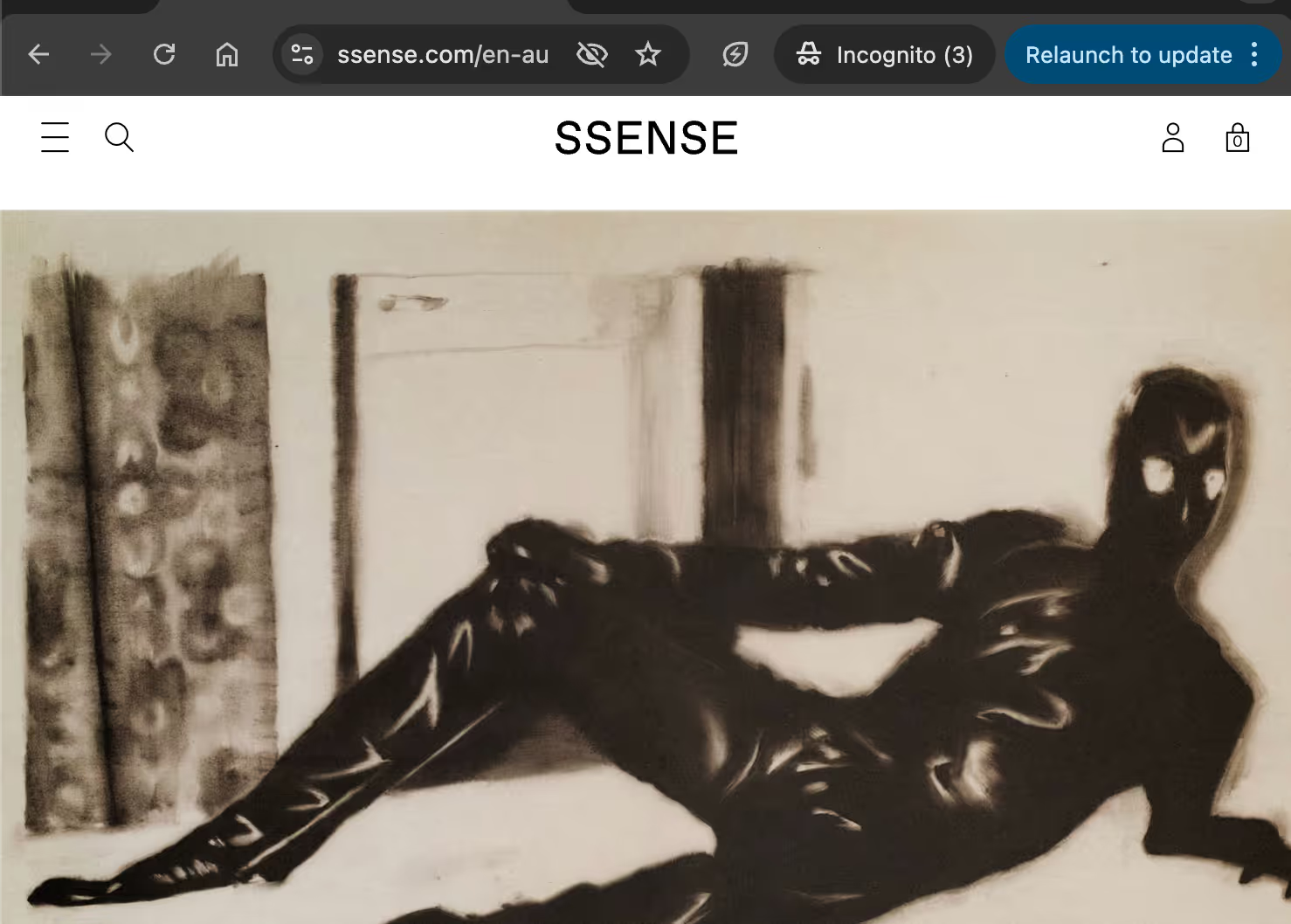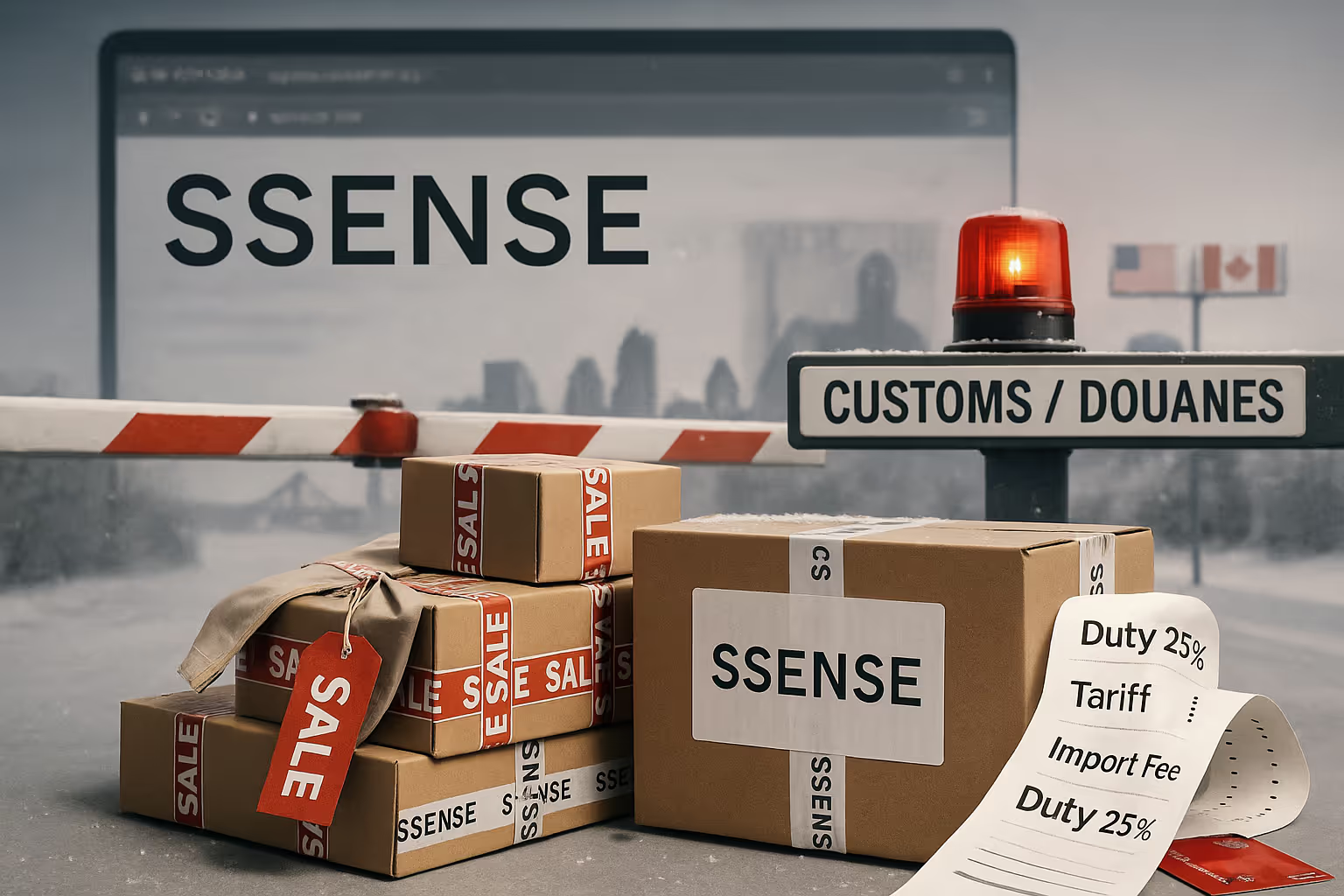The week the lender pulled the alarm
On Thursday afternoon in Montréal a lender reached for the fire alarm and pulled. A group fronted by Bank of Montreal went to court under Canada’s Companies’ Creditors Arrangement Act and tried to take the wheel from SSENSE, the indie‑luxury e‑commerce darling that built a cult around cool brands and semi‑permanent sales. Within hours, the company said it would file its own CCAA application to keep trading while it works out how to pay the band and the bouncers. This is protection, a pause to breathe rather than a burial. But protection is what you ask for when the math stops protecting you.
“While we sought a collaborative path forward, our primary lender has instead placed the company under CCAA protection and commenced a sale process without our consent,” “We will be filing our own CCAA application to safeguard the company, retain control of our assets and operations, and fight for the future of this business.” A SSENSE Spokesperson said.
The official villain is policy
Washington has scrapped the de minimis free run for parcels under 800 dollars and slapped retaliatory tariffs on cross‑border goods arriving from places like Canada. The same hoodie that glided past customs last month now attracts duty and paperwork. Free shipping suddenly isn’t. Try doing “20 percent off everything” when Customs just took 25. Strategy plans for duty shocks; this became a bonfire.
Why this is structural
If SSENSE’s model were built for full‑price clients and fat contribution margins, you’d call this a squall. But when your superpower is price discovery via endless markdowns into the United States, and your orders ride from Montréal over a border that just got weaponised, it’s not a weather event. It’s structural. The company will tell you it has 1,000‑plus people to think about, a lender acting without consent, and a plan to keep the lights on while it restructures. All true. None of it changes the physics of a business that trained a generation to wait for the red sticker while shipping most of its boxes into a tariffed market from the wrong side of the line.

Where the euphemisms meet a calculator
In fashion e‑commerce your unit economics are brutal and simple. Net sales minus cost of goods minus freight and duty — that gets you to contribution margin. If you sell at 30 off and a border just added 20 to 35 points to your landed cost, the email subject line can be poetry. The P&L still screams prose. Reuters and the Post can argue the precise rates and effective dates; the direction of travel is the only direction that matters. Up on costs. Down on elasticity.
Comparators by exception
Mytheresa has spent years grooming wealthy clients like a private bank and staging trunk shows instead of trench wars on price. Fewer customers. More spend. Better sell‑through at full price. When tariffs and logistics snarl up, you still have contribution margin because you weren’t feeding it to the promo calendar. SSENSE kept the indie‑edge — and good on them — but never fully crossed the aisle to the high‑yield customer who pays now, not during the biannual clearance. In a discount business, policy risk compounds faster than interest. (In a discount business, everything does.)
The lender story is the sideshow and the show
Creditors don’t move on a thriving cash machine. They move when cash turns theatrical. BMO and friends did not wake up mean; they woke up secured. When the bank files first it’s telling you two things: we’ve lost patience and we want a process we can drive. SSENSE’s counter‑move — file your own CCAA case and keep control — is the right play in the playbook. The filing shifts possession while the score remains the same.
The comforting myth and the awkward middle
Let’s avoid the comforting myth that this is just Trump’s trade war singeing a bystander. Policy was the match. The kindling was a model that relied on cross‑border arbitrage and a customer base indoctrinated on discount dopamine. Post‑pandemic, US luxury demand softened at the bottom end while brands yanked more of their hero product into direct channels. The multi‑brand sites left in the middle had three options: become white‑glove and expensive, become category specialists with real pricing power, or become conveyors of other people’s inventory at a perpetual cut. Only one of those works when Customs wants its slice at the door.
Beyond Canada: who else gets hit
And if you think this is some hermetic Canadian drama, ask the Australians on the line sheet. SSENSE buys a lot of local labels — Esber, Ksubi, Dion Lee, the usual high‑polish suspects. When a marketplace coughs under creditor supervision, the vendors catch it in accounts receivable and in future orders. Wholesale isn’t Uber. You don’t surge‑price your way out of a payment cycle. You wait, you tighten, and if you’re smart you diversify your doors. This is basic risk management.
The grown‑up turnaround
What does a grown‑up turnaround look like here? First, stop training the customer to wait. You cannot workshop your way out of markdown addiction — you starve it. Fewer events. Shallower cuts. Buy tighter so you’re not clearing your own mistakes at a loss plus duty. Second, move the cost base. A US node isn’t optional now; it’s a life raft. You either localise fulfilment or you donate your margins to policy. Third, pick a lane on customer strategy. If you want high‑yield, act like it: proper clienteling, in‑market activations, service that justifies the price. If you want volume, be honest that you are a logistics company with a moodboard and go build the infrastructure to match. Choose your customer and your position, and give creditors a reason to keep listening.

Taste, attention and price integrity
There’s a more awkward truth under all of this. SSENSE’s culture of taste — the editorial, the emerging designers, the sense of being slightly ahead of the curve — is real and valuable. Taste creates attention. But attention on sale is not the same as attention on price integrity. You can’t cash a vibe. You can only amortise it if the margin survives the border.
Will they keep trading?
Will they keep trading while they figure it out? That’s the point of CCAA. The court gives you air, you give the court a plan, and the people who actually move parcels keep moving parcels. Staff still get paid. Customers still receive boxes, now with more paperwork and a higher landing cost. Vendors watch the docket and the receivables. The rest of us watch whether someone stops emailing “extra 20 off” like it’s oxygen.
Two lines to remember
First: treat discounts as a tactic; the business model must stand on its own.
Second: never let a border do your merchandising. Tariffs didn’t invent SSENSE’s problem. They just exposed it.
TLDR: Tariffs and the end of de minimis were the match. A discount‑trained customer base, cross‑border fulfilment costs, and middle‑of‑the‑road positioning were the kindling. Creditor protection buys time; the fix is price integrity, US‑side costs, and a clearer customer lane.
.png)
.avif)


